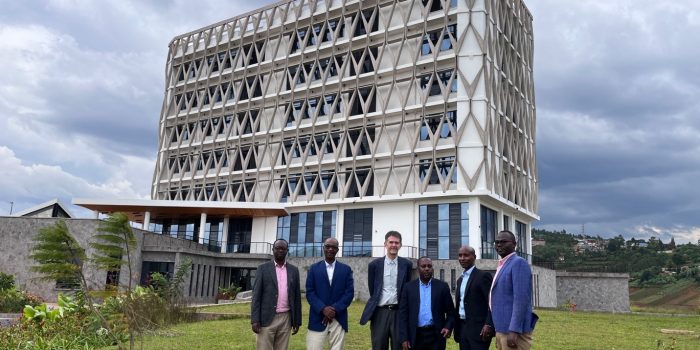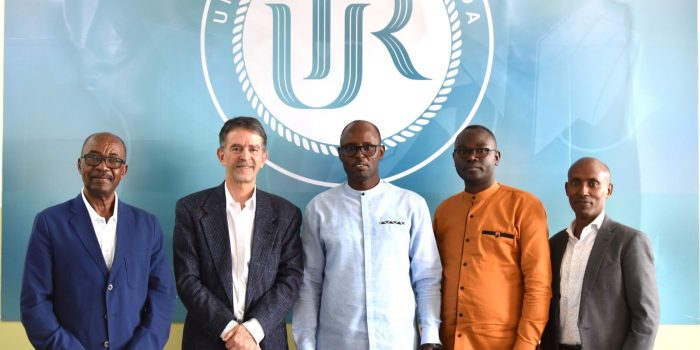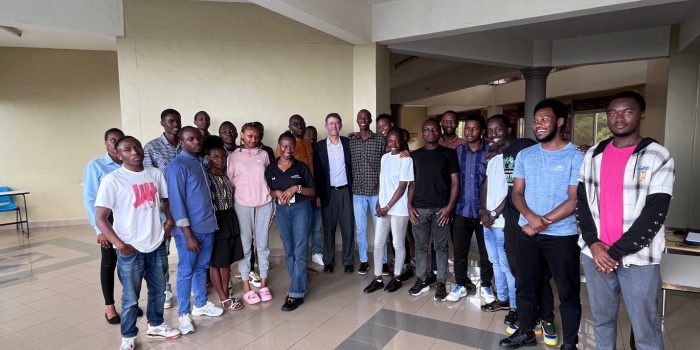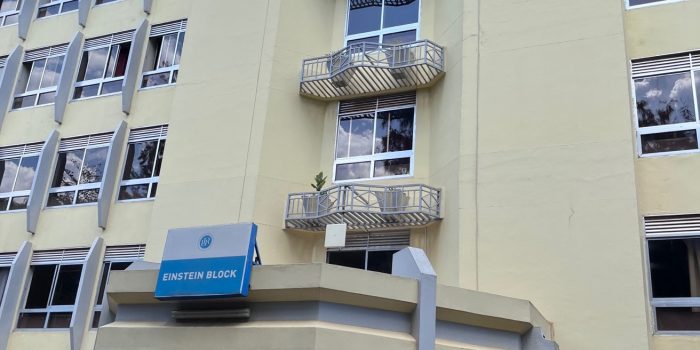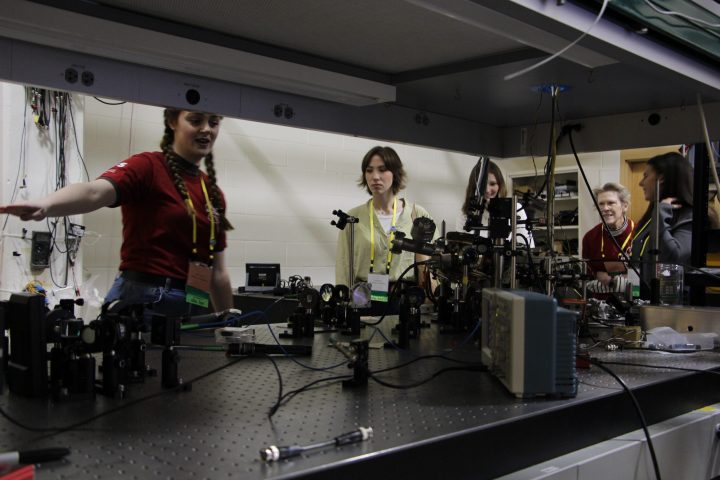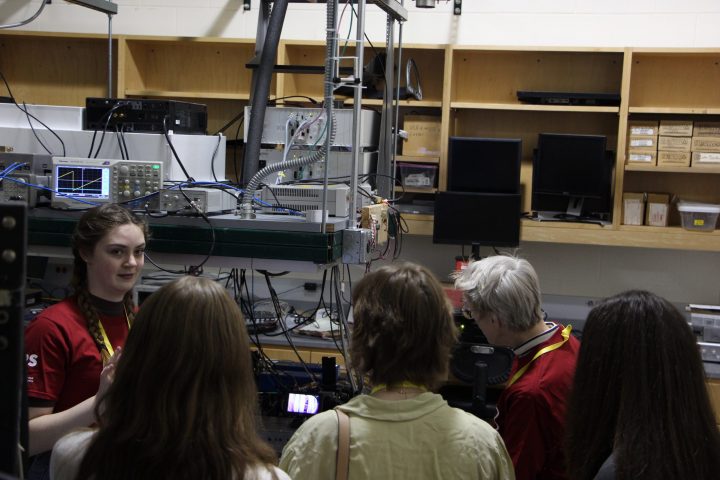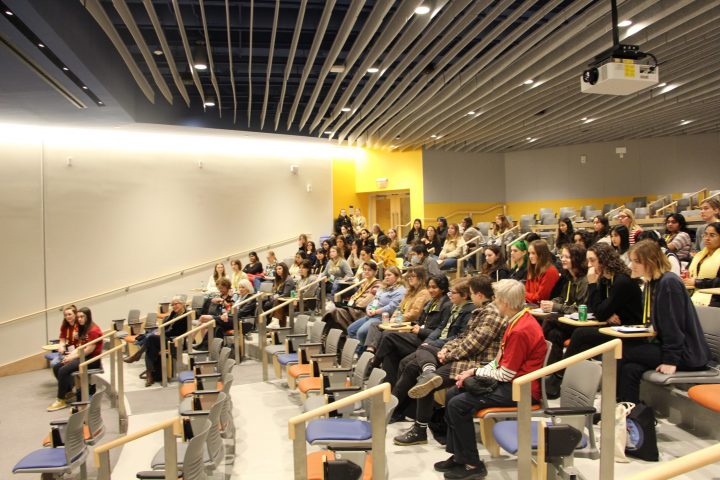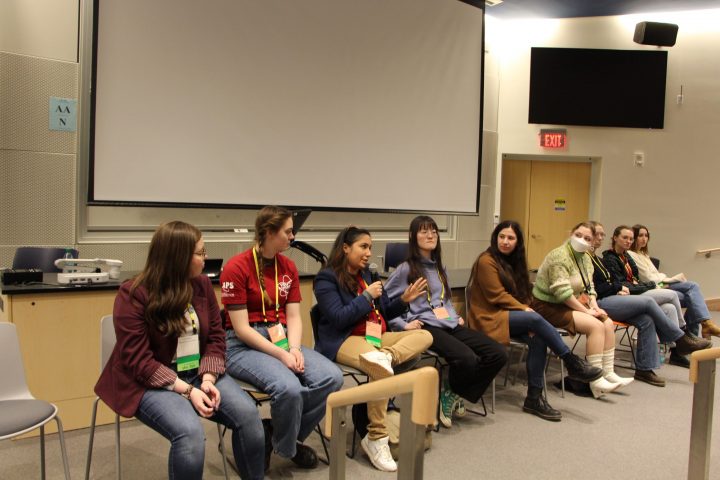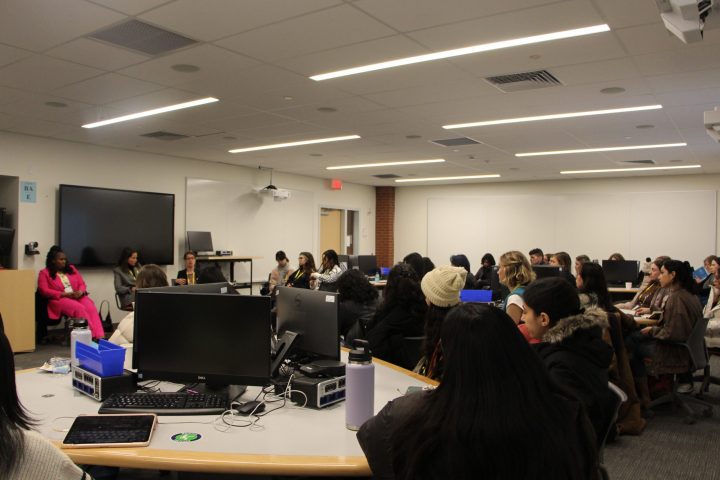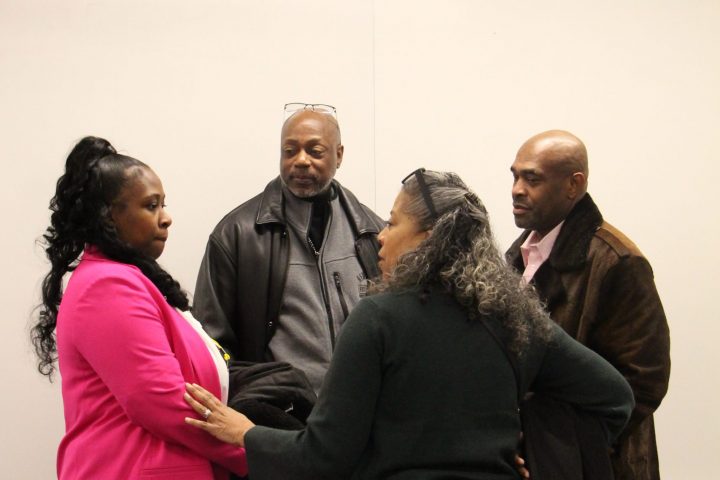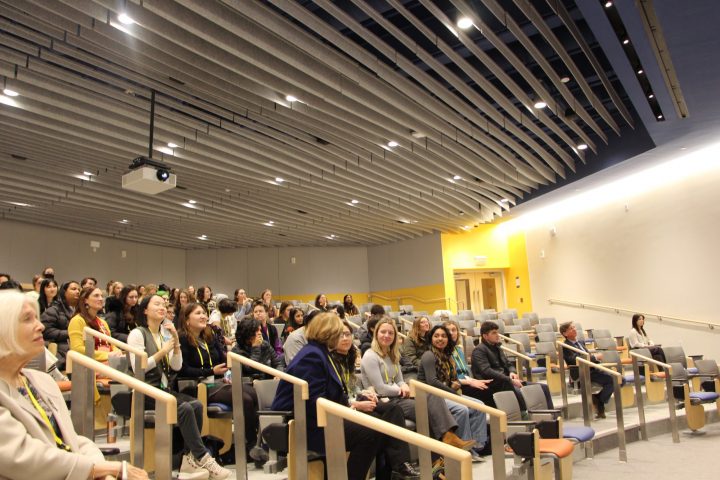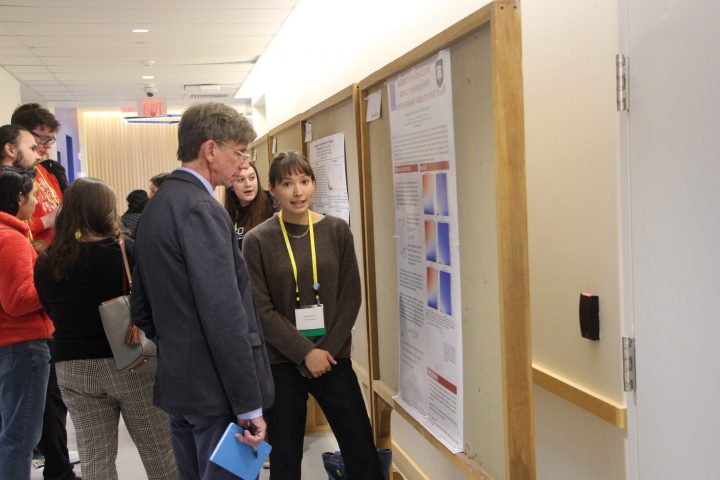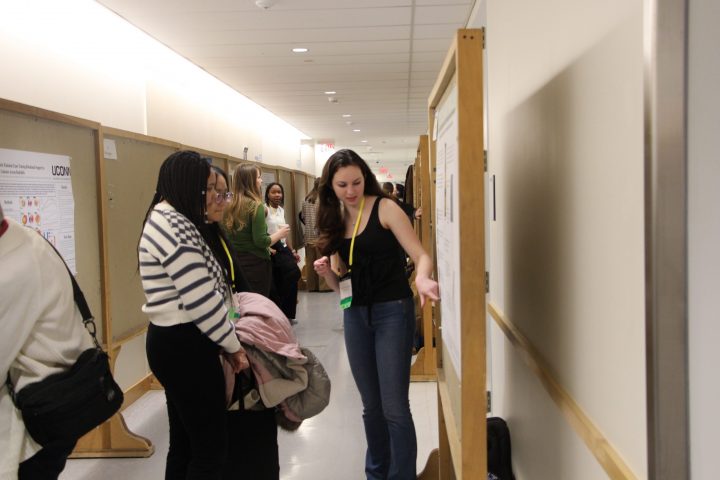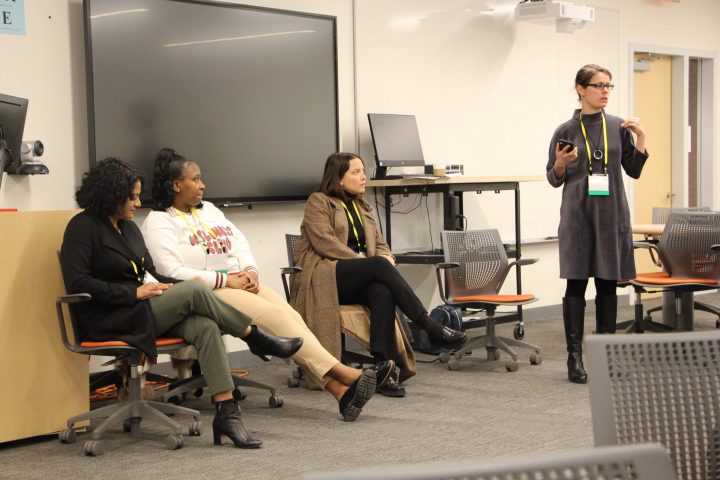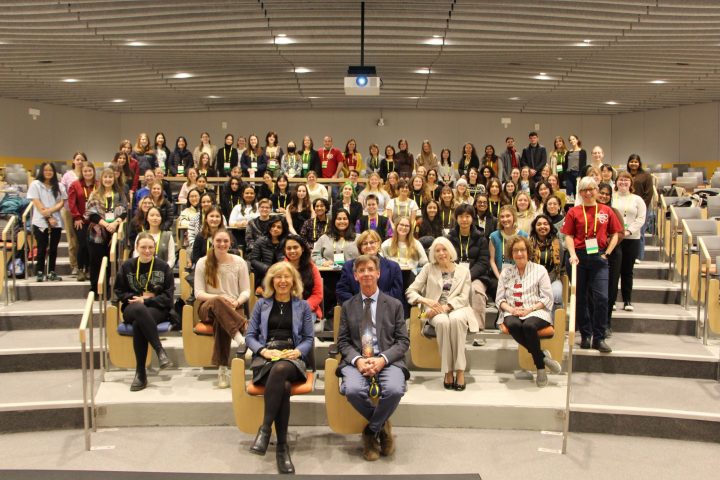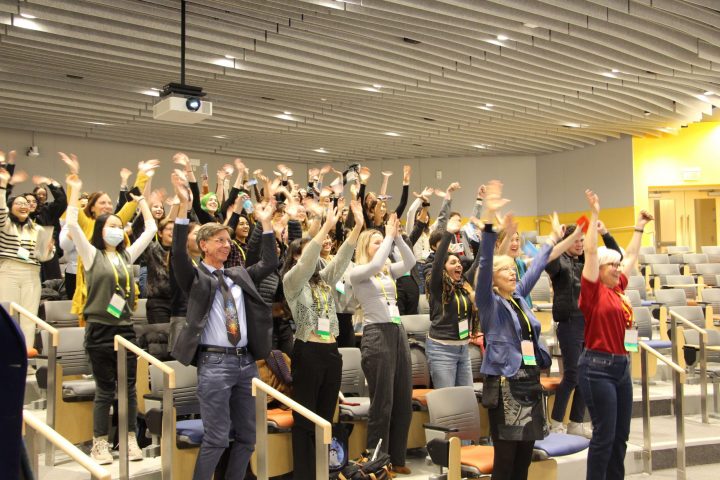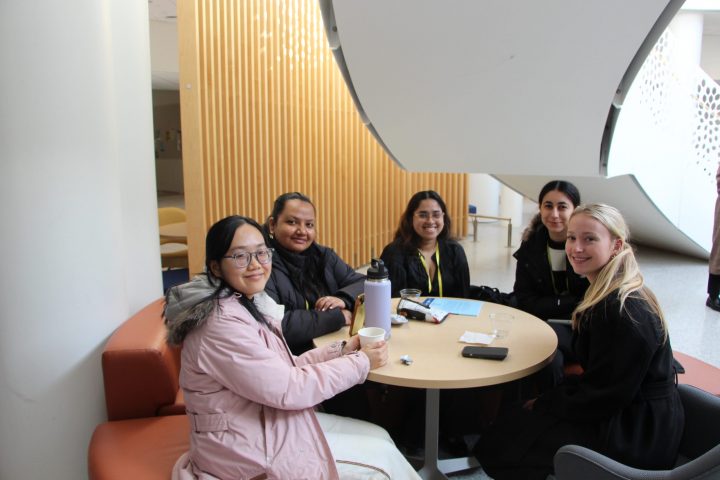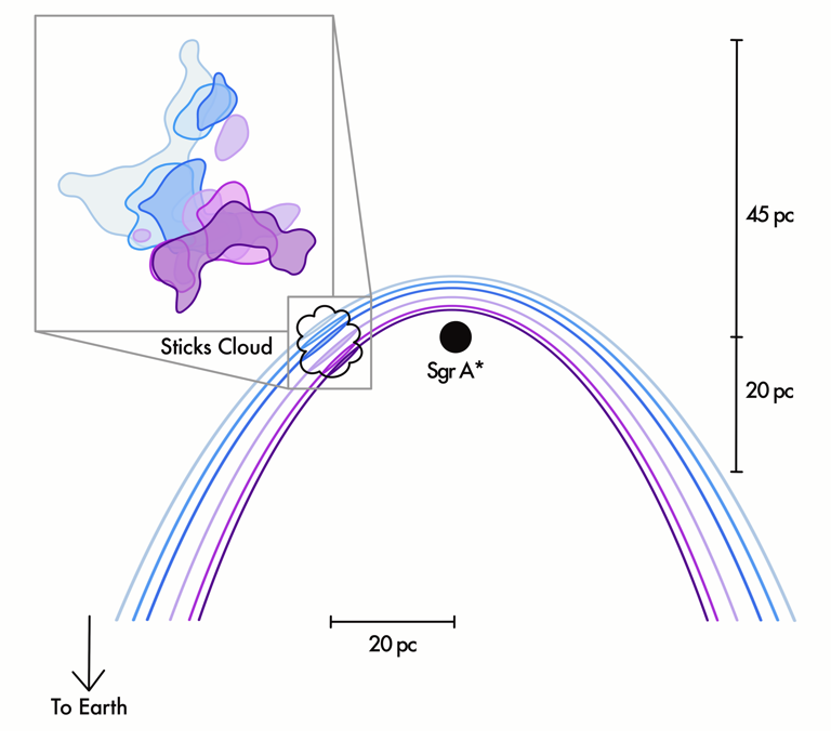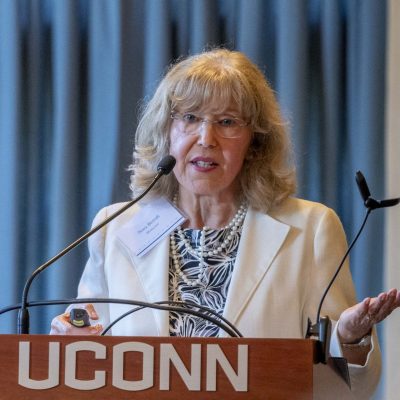Dear Friends of UConn Physics,
While I look forward to sharing the news and accomplishments of the Physics Department over the past year, I can’t help but say that one word keeps coming to mind: turbulent. There is no getting around the fact that at the university, state, and federal levels, things have been changing on an almost daily basis. This uncertainty has presented the department with many challenges, but two things have helped me immensely. First, in my position as Department Head, I have always appreciated the abilities and dedication of the department staff. However, the past three months have stressed the department in ways I have not seen in all my time at UConn and I am so grateful for how the staff rallied in response and showed the incredible depth of their commitment to the department. Second, despite the difficulties, the faculty and students have carried on doing great work as though nothing unusual was going on and I am excited to share some highlights with you.
Our faculty have been very busy this past year. Prof. Pavel Volkov received the Nevill F. Mott Prize for his work on unconventional superconductors. Prof. Cara Battersby is a team leader on a NASA program, PRIMA, one of two proposals that are competing to become a $1B space probe. Prof. Daniel Angles-Alcazar managed, in one year, to get tenure and promotion to Associate Professor and receive a Sloan Fellowship and an NSF Early Career Award. Prof. Andrew Puckett got promoted to Full Professor and Prof. Niraj Ghimire and Prof. Erin Scanlon were promoted to Associate Professor in Residence. CLAS Awards went to Prof. Matt Guthrie for Broader Impacts, Service, and Visibility and Prof. Sarah Trallero for Teaching, Learning, and Student Success. We had two books published: Mode-Locked Lasers: Introduction to Ultrafast Semiconductor and Fiber Lasers, by Prof. Niloy Dutta, and The Music of Physics: An Introduction to the Harmonies of Nature, by Prof. George Gibson.
Our alumni have also been active. Prof. Manasse Mbonye (Ph.D. 1995) gave a commencement address and received an honorary degree from UConn for his profound contributions to rebuilding the university system of Rwanda. We are lucky to have Manasse come for an extended visit this fall, hosted by Prof. Gerald Dunne. Prof. Ron Mallett was featured in yet another article on time travel, this time in earth.com. Prof. Kyungseon Joo co-organized a workshop on Quantum Information Science with our former Prof. Robin Cote and a second workshop is being planned.
As usual, we gave out two honors to our undergraduate students. Our Katzenstein Prize for the best undergraduate research thesis went to Thomas Tarutin, supervised by Prof. Asli Tandoğan. Our Mark Miller Award for best research proposal went to Ayssar Farah, supervised by Prof. Gerald Dunne. The undergrads also had a busy travel schedule with Grace Gardella spending the summer at Brookhaven National Lab and Michael Frank and Owen Finch went to the Research Center for Nuclear Physics in Japan.
Our graduate students also did well: Provakar Datta won this year’s JSA/Jefferson Lab Thesis Prize, supervised by Prof. Andrew Puckett. Gursimran Kainth spent the summer at CERN, and Alessio Illari went to Los Alamos National Lab. Our students (undergrad and grad) showed up in various press releases representing the excellent research done in the department, including Noah Frese, Cameron Brady, Clark Bray, Bochao Xu, Brenna Petrelli, Danya Alboslani, and Logan Fries.
This past January, we hosted the Conference for Undergraduate Women and Gender Minorities in Physics, sponsored by the American Physical Society and organized by Prof. Nora Berrah. Over 100 students were in attendance, making the conference a big success. Renovations of the UConn Planetarium were completed under the supervision of Prof. Matt Guthrie and we are now hosting regular shows at the planetarium and night viewing sessions at the recently renovated observatory. Responding to the budget situation at UConn, we expanded our summer online offering with a new course created by Prof. Diego Valente and Prof. Belter Ordaz. The course filled up the first day of registration and a second session was added, which also filled up.
Due to the fiscal uncertainties at the university, our special lectures are being postponed until the spring semester. Please look forward to future announcements.
Sincerely,
George Gibson
Department Head, Physics
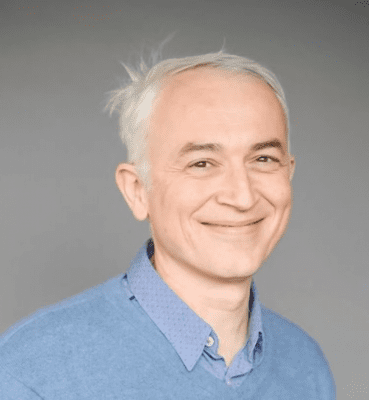 Prof. Vladan Vuletić, Lester Wolfe Professor of Physics at MIT, is a leading figure in atomic, molecular, and optical physics, with pioneering contributions to quantum science and technology. Born in Peć, Serbia (then Yugoslavia), and educated in Germany. In 1992, he earned his Physics Diploma with highest honors from the Ludwig-Maximilians-Universität München, and in 1997, a Ph.D. in Physics (summa cum laude). He then conducted postdoctoral research with Nobel Laureate Steven Chu at Stanford University as a Lynen Fellow of the Humboldt Foundation. After faculty appointments at Stanford and MIT, he rose to the rank of Full Professor at MIT in 2011. Vuletic is Director of the MIT-Harvard Center for Ultracold Atoms and Chair of the Division of Atomic, Molecular, and Optical Science of the American Physical Society.
Prof. Vladan Vuletić, Lester Wolfe Professor of Physics at MIT, is a leading figure in atomic, molecular, and optical physics, with pioneering contributions to quantum science and technology. Born in Peć, Serbia (then Yugoslavia), and educated in Germany. In 1992, he earned his Physics Diploma with highest honors from the Ludwig-Maximilians-Universität München, and in 1997, a Ph.D. in Physics (summa cum laude). He then conducted postdoctoral research with Nobel Laureate Steven Chu at Stanford University as a Lynen Fellow of the Humboldt Foundation. After faculty appointments at Stanford and MIT, he rose to the rank of Full Professor at MIT in 2011. Vuletic is Director of the MIT-Harvard Center for Ultracold Atoms and Chair of the Division of Atomic, Molecular, and Optical Science of the American Physical Society.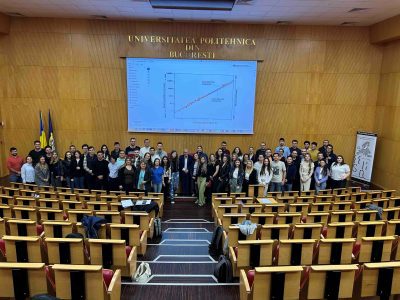
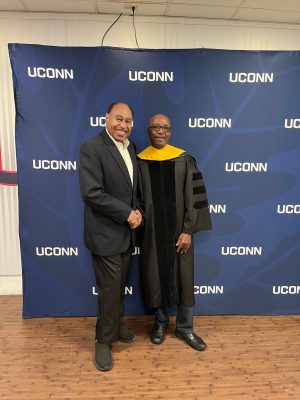 Manasse Mbonye (UConn Physics PhD 1996, Advisor: Ron Mallett) was awarded an Honorary Doctor of Science degree, and was the Commencement Speaker
Manasse Mbonye (UConn Physics PhD 1996, Advisor: Ron Mallett) was awarded an Honorary Doctor of Science degree, and was the Commencement Speaker 
